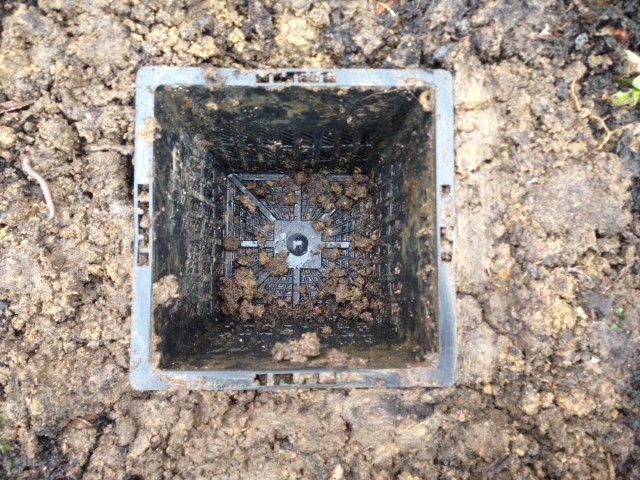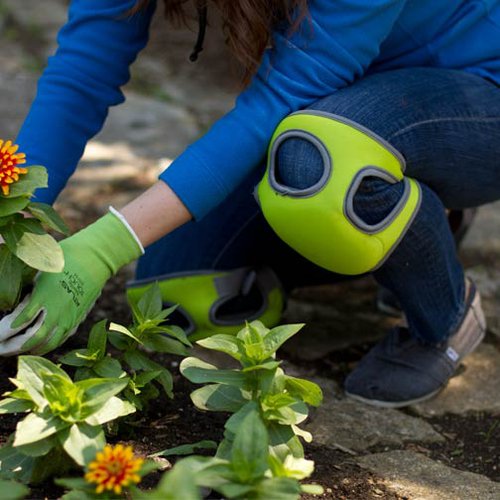Warning! Before you raze your garden to the ground, make sure you navigate around it with caution, and don’t come a cropper like I just did! Stepping up onto my timber edged lawn – in the wet – was not my finest moment. As I very well know as a garden designer, wood + wet = ice rink conditions!
I had a moment of absentmindedness. I’m just glad no one saw!
But I have two wet knees to show for it. Husband looked at me and said ‘you of all people should know not to kneel on the ground in the rain’…I didn’t know whether I should volunteer to wear the badge of stupidity for kneeling in the rain or the one of humiliation for slipping over on wet wood! Whichever I chose, I wasn’t coming out of it with any grace or dignity!
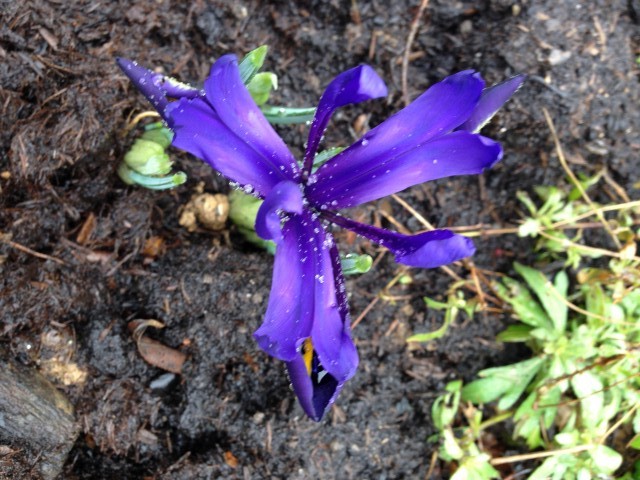
Adding some cheap iris bulbs adds some zing in spring! What an amazing colour…this is at the end of my garden but I can see it from my kitchen window
So back to tasks in hand…what to do in the garden this February.
1) Cut back all perennials that you have kept for their seed heads and structure this winter. If you look closely, some will have started shooting form the base already. If they haven’t, fear not! They are not necessarily dead, just resting a bit longer.
2) Cut back any deciduous grasses you retained for structure throughout the winter. If you aren’t sure which are deciduous, these will be the ones that now resemble hay or straw! Stipa tenniusima, a popular grass due to its gracefulness in the border can just be combed with your fingers to pull out the dead blades. Other grass like plants for example, sedges, rushes and the so-called-but-not-a-grass-at-all Ophiopogon shouldn’t be cut back. Just cut out any dead parts.
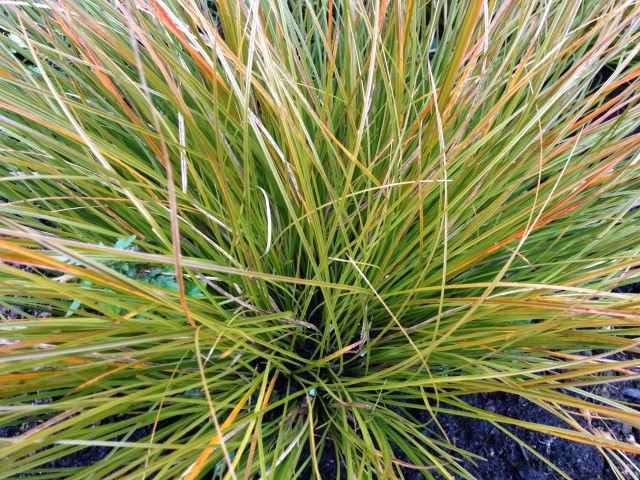
3) Take hardwood cuttings from your Cornus plants if your existing ones are getting too woody and large at the base. Don’t be too attached to an individual plant. They are living things and get old and in poor condition and grow out of a space. Cuttings are a great way to remove any pangs of meanness as you dig up the parent plant and discard it (remember you can dry and burn them, and add the ash to the beds). The RHS tell you how to take cuttings here. Scroll down to find the part on cornus.
4) Prune your Wisteria. Some of our previous garden design clients have had wisteria planted by us in their gardens. Wisteria is a climber that people accept looks beautiful, but are a little scared about the maintenance. Don’t be. Watch this ‘How To’ from Colin Crosbie of RHS Wisley. Really simple explanation on ALL the pruning stages of the plant so you fully understand the hows and whys!

Plant out some cheap bedding available from the garden centres. This is polyanthus ‘Stella Pheasant’s Eye’ and is a beautiful specimen. The leaves are dark edged and really pretty. A must-have in my book!
5) Cut back your evergreen hedges and any deciduous ones that have not yet been renovated. This HAS to be done before birds start nesting as it is against the law to intentionally take, damage or destroy a nest. Read a bit more about it by the RSPB here.
6) Prune winter flowering shrubs after flowering has finished. Cut back the Ds (Diseased, Dying, Damaged and Dead) and shape the plant if its getting leggy or growing unevenly.
7) Also prune roses and hydrangeas now. The RHS has really good advice on these that I wouldn’t dream of summarising!
8) Clear and tidy up: Clear away any lingering dead leaves, rubbish and dead plant parts that have scattered about your beds and borders, paths and lawns. This is the garden ‘Spring Clean’!
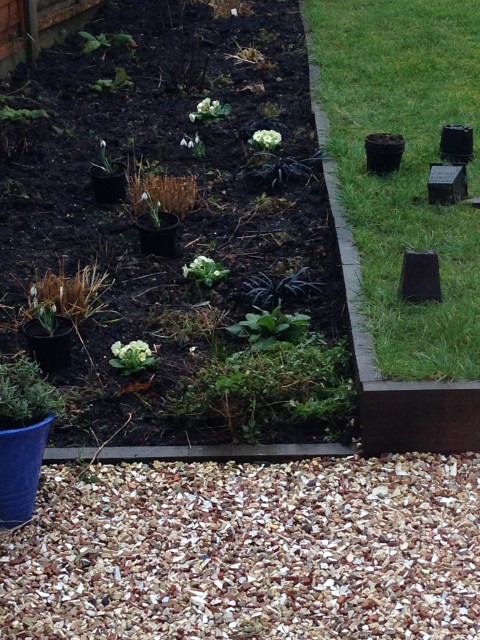
Compost and mulching adds goodness to the soil and also makes the beds tidier – check the primroses and snowdrops glowing!
9) Compost, compost, mulch, manure! Now is the time to add a good layer of organic matter to the beds. This has a two fold benefit. Firstly it adds essential nutrients and structure to the soil, and it also tidies up the area, making the graceful spring snowdrops and demure primroses stand out beautifully.
A little aside…plant your bulbs into aquatic baskets and sink them into the ground. This allows the soil to drain, allow the soil fauna to move about, but also ensures the bulbs are safe from the evils of the spade when you start doing maintenance through the rest of the year when they are hibernating.
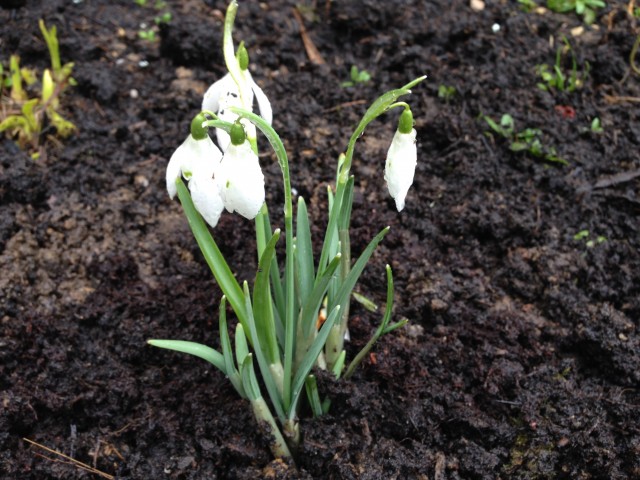
Snowdrops happy in their new aquatic basket home!
Accessory of the month! Buy yourself a kneeler. This keeps your knees dry, and also prevents them grinding on stones, flags or other uncomfortable ground surfaces! Better still, buy yourself the ones you strap to your knees, to save yourself from humiliation of you slip over on wet wood!
Next Month…things to do in March. Spring is on its way! Hurray!
